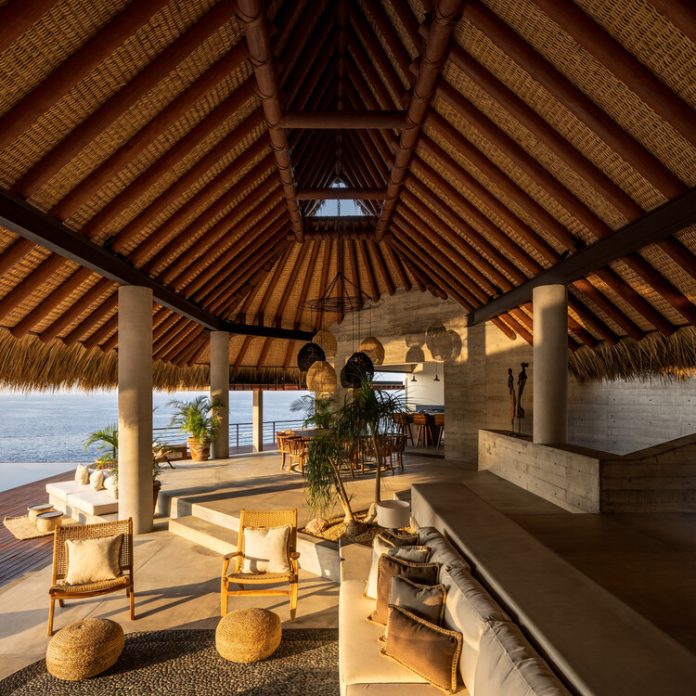What should be considered when choosing roofing materials?
Cliff House / Zozaya Arquitectos © Rafael Gamo
share
share
Or
https://www.archdaily.com/1002973/what-to-consider-when-choosing-roofing-materials
There are many ways to define architecture, from the most technical to the most poetic. It uses many aspects in its context: space, program, tectonics and gesture related to line, drawing and design. Speaking of gestures, a sketch of a shelter may quickly come to mind: a human-scale cut or elevation of vertical frames and covers.





The most common shelter idea involves cover: a plan to protect living things from inclement weather and danger, and waterproofing of buildings. The covering fulfills the sealing function and responds to local peculiarities. Currently, different construction systems for cladding allow for the exploration of shapes, combinations and materials to achieve the project objective. Various materials commonly used in construction have different characteristics with advantages and disadvantages, offering numerous possibilities depending on the needs.
ceramic tiles
The most popular covering in Brazil are ceramic tiles made of clay. They use the same material as bricks and go through the same manufacturing process. They are part of the Portuguese colonial heritage and representative of Brazilian historical architecture. However, they are not restricted to Brazil and respond well to tropical climates.
 Karai Farmhouse / RAIN Studio of Design © Yash R Jain, Ekansh Goel
Karai Farmhouse / RAIN Studio of Design © Yash R Jain, Ekansh Goel
In general, it is an accessible material, easy to find in the construction sector, with good thermal comfort performance. Supported by wooden structures – which also have a long history in colonial architecture – ceramic tiles remain an example of traditional building techniques but can be combined with more modern proposals. The mix takes the ‘regular’ roof and gives it a more modern look while emphasizing its value for money and biodegradability.
 Svarga Cilimus House / PSA Studio © Mario Wibowo
Svarga Cilimus House / PSA Studio © Mario Wibowo
However, ceramic tiles have porosity, a high number of joints in the pieces and displacement due to strong winds. Therefore, special attention must be paid to the interlocking and assembly process to prevent the tiles from moving or creating gaps for leaks inside the building.
Metallic Tiles
Metallic covers are widely used in construction, allowing for larger spans with fewer support structures. Resistant and standardized, they can also be used as vertical enclosures. The variety of uses also opens up other interior designs, and the use of the roof also requires fewer pitch and support structures.
 Berghaus/Coonvite © Yeferson Bernal Santacruz
Berghaus/Coonvite © Yeferson Bernal Santacruz
With metal tiles, despite the high heat transfer of metal, it can be assumed that the high rate of reflection lowers the internal temperature. Metal roof tiles can also be sandwich tiles, in which a layer of insulating material is used between the sheets to increase the thermoacoustic efficiency.
 Breakers Sports Clinic / Club Studio © David Zarzoso
Breakers Sports Clinic / Club Studio © David Zarzoso
Zinc treatments can mitigate corrosion and oxidation in steel tile. The advantage of aluminum tiles is that the material can be recycled and reused. Because this type of cover is made of metal, it is comparable to the construction speed of metal structures, but the support beams require special work.
fiber cement tiles
In Brazil, fiber cement tiles are similar to metal tiles with corrugated or trapezoidal sheets. They can bridge larger gaps and require more widely spaced support structures. They are also available in panels or flat tiles. They are inexpensive and fire resistant, can be used for vertical waterproofing, are lighter than ceramic tiles, and save labor costs and installation time. However, their thermal performance is poor and their composition is controversial.
 Cultural Space Seeding Axé / Tadu Arquitetura © Tadu Arquitetura
Cultural Space Seeding Axé / Tadu Arquitetura © Tadu Arquitetura
Fiber cement is a mixture of synthetic fibers and cement. One of its components is asbestos, which is harmful to health. Although some manufacturers claim they use only small amounts of asbestos in their fibres, others substitute it. In recent years, countries in the Global South have begun to ban its production and use, while richer countries have already banned asbestos from domestic consumer products – although they still export it to poorer countries. Part of the demand for global reparations also revolves around these aspects.
straw
Thatched roofs are not only related to native Brazilian architecture, which can be described as traditional and imposed by the Portuguese, but are also widespread in Asian countries and represent an environmentally friendly material for roofing. As the raw material is natural and biodegradable, are its impact on disposal is almost zero. The lightness of the fibers and sheets requires less support structure and the malleability of the material allows for more organic shapes and greater formal exploration in construction.
 Beyond Survival – A Safe Place for Rohingya Women and Girls / Rizvi Hassan © Rizvi Hassan
Beyond Survival – A Safe Place for Rohingya Women and Girls / Rizvi Hassan © Rizvi Hassan
Roof assembly is carried out using simple principles: tying the sheets and overlapping the layers on the structure. However, the process is manual and painstaking, requiring longer construction time and specialized labor. In addition, straw requires more maintenance than fire and, being an organic material, requires maintenance more frequently than manufactured materials.
 Cliff House / Zozaya Arquitectos © Rafael Gamo
Cliff House / Zozaya Arquitectos © Rafael Gamo
For each roof type mentioned and many other roof types available and yet to be discovered, there are limitations and opportunities, advantages and disadvantages. Architectural protection depends on its top finish, and each project requires its own type of roof.
www.archdaily.com
https://www.archdaily.com/1002973/what-to-consider-when-choosing-roofing-materials














